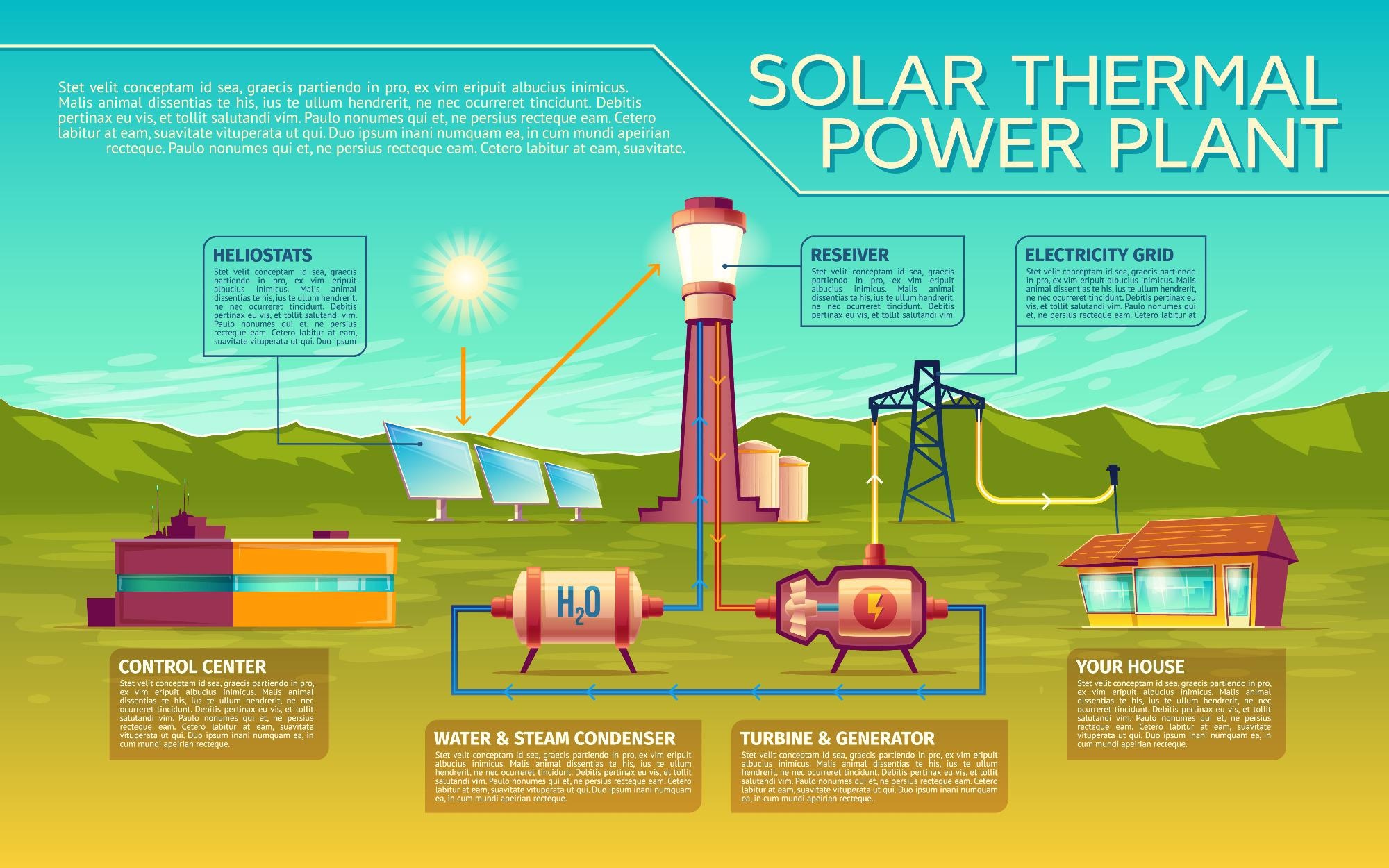The Heliostat Consortium (HelioCon), an international initiative to reduce the price of heliostats, has been launched by the U.S. Department of Energy’s (DOE’s) National Renewable Energy Laboratory (NREL), in partnership with Sandia National Laboratories and the Australian Solar Thermal Research Institute.

Image Credit: Vectorpocket/Shutterstock.com
HelioCon highlights the importance of heliostats as a vital part of concentrating solar thermal power (CSP) technologies. CSP featuring cost-effective thermal energy storage is suitable either for producing dispatchable electricity or for delivering high-temperature heat for hard-to-decarbonize industries like chemical production, cement and steel.
Heliostats trace the sun’s position to reflect sunlight to a receiver, which can then be stored for a long time as energy and converted into electricity. A single CSP plant can include more than 10,000 heliostats, accounting for 30%–50% of system construction, operations and maintenance costs.
DOE’s Solar Energy Technologies Office (SETO) has been making efforts to reduce heliostat costs to $50 per square meter to realize its goal of $0.05 per kilowatt-hour for next-generation CSP plants with thermal energy storage.
Researchers from national laboratories, industry and other research institutions will contribute to HelioCon.
The Heliostat Consortium will be a collective powerhouse that centralizes U.S. efforts to develop advanced heliostat technology. It will also leverage international expertise toward achieving DOE’s aggressive goals.
Guangdong Zhu, Director, Heliostat Consortium
Zhu is also a Senior Researcher at NREL. According to HelioCon’s strategic roadmap, metrology, standards, field deployment technologies and techno-economic analysis will be developed to reduce the heliostat costs. Moreover, it strives to increase domestic manufacturing of solar technologies and to gain the attention of more professionals to clean energy careers.
Low-cost CSP can help us achieve a net-zero energy sector. CSP’s ability to directly generate high temperatures at low cost will directly address many industrial applications whose emissions can’t be easily reduced with other technologies or electrified.
Avi Shultz, CSP Program Manager, SETO
HelioCon is funded by SETO. Through its industry board of advisors and future requests for proposals, HelioCon is actively engaged in widening the community working on this technology, as well as engaging new leaders.
With its collaborative, industry-focused structure, the Heliostat Consortium will provide a clear roadmap for the industry. Key efforts like HelioCon will help ensure we move the country toward an equitable clean energy economy and a path to net-zero carbon emissions by 2050.
Johney Green, Associate Laboratory Director for Mechanical and Thermal Engineering Sciences, NREL